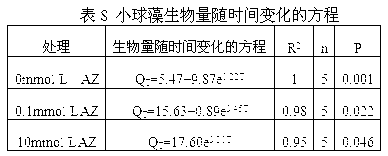Method for detecting and quantifying utilization of carbon source in calcium carbonate by microalgae
A technology of calcium carbonate and microalgae, which is applied in the measurement/inspection of microorganisms, biochemical equipment and methods, etc., can solve the problems of reducing the effectiveness of climate change policies and measures, affecting the accuracy of carbon sink estimation, ignoring utilization, etc. Achieve the effect of low cost, reliable data and simple calculation
- Summary
- Abstract
- Description
- Claims
- Application Information
AI Technical Summary
Problems solved by technology
Method used
Image
Examples
Embodiment Construction
[0047] Embodiments of the present invention: the first step is to measure the calcium carbonate stable carbon isotope composition δ produced by different manufacturers 13 C value and crystal form, choose two δ 13 Calcium carbonate powder with a C value difference greater than 8 ‰ and the same crystal form is added to the culture medium as isotope label 1 and isotope label 2 to cultivate the microalgae to be tested, and determine the stable carbon isotope composition of the initial microalgae to be tested δ 13 C value δ 0 and protein content N 0 . δ of isotope-labeled calcium carbonate 13 C value is recorded as δ Ci , where the δ of calcium carbonate labeled with 1 13 C value is δ C1 , the δ of isotope-labeled calcium carbonate 2 13 C value is δ C2 .
[0048] The second step is to measure the protein content of microalgae at different culture times under various culture conditions during the culture process. After the culture is over, the algae are harvested, and the ...
PUM
 Login to View More
Login to View More Abstract
Description
Claims
Application Information
 Login to View More
Login to View More - R&D
- Intellectual Property
- Life Sciences
- Materials
- Tech Scout
- Unparalleled Data Quality
- Higher Quality Content
- 60% Fewer Hallucinations
Browse by: Latest US Patents, China's latest patents, Technical Efficacy Thesaurus, Application Domain, Technology Topic, Popular Technical Reports.
© 2025 PatSnap. All rights reserved.Legal|Privacy policy|Modern Slavery Act Transparency Statement|Sitemap|About US| Contact US: help@patsnap.com



